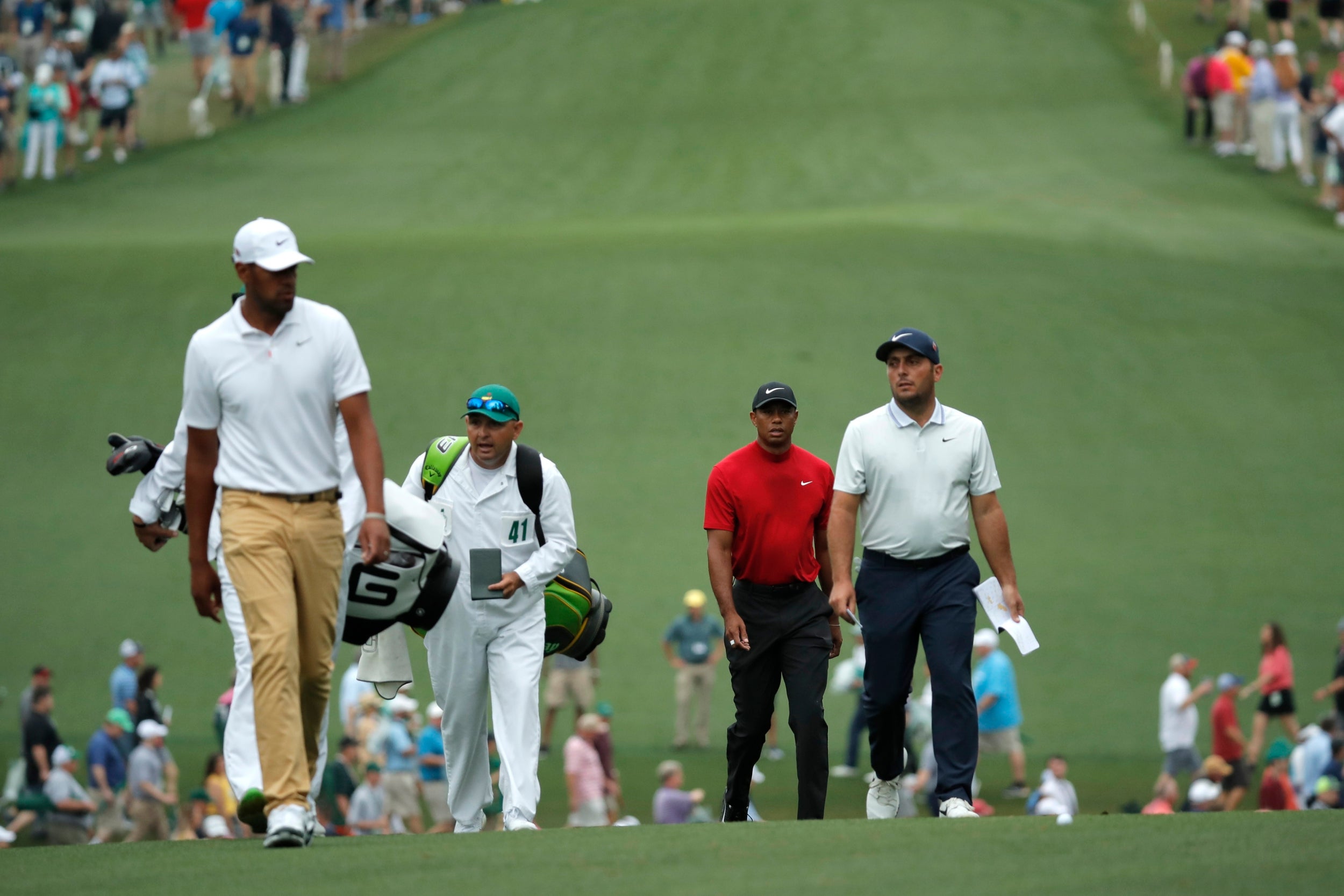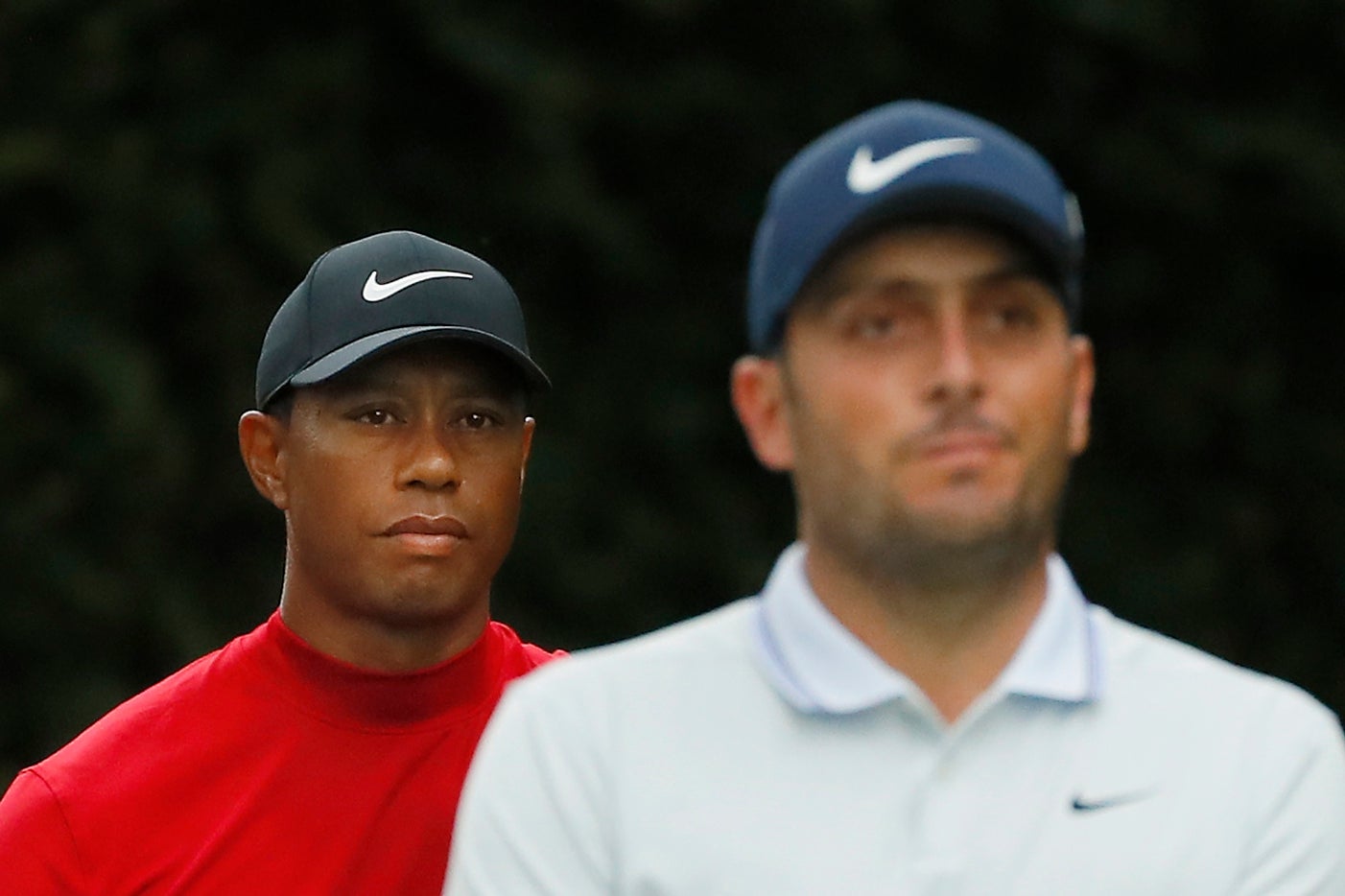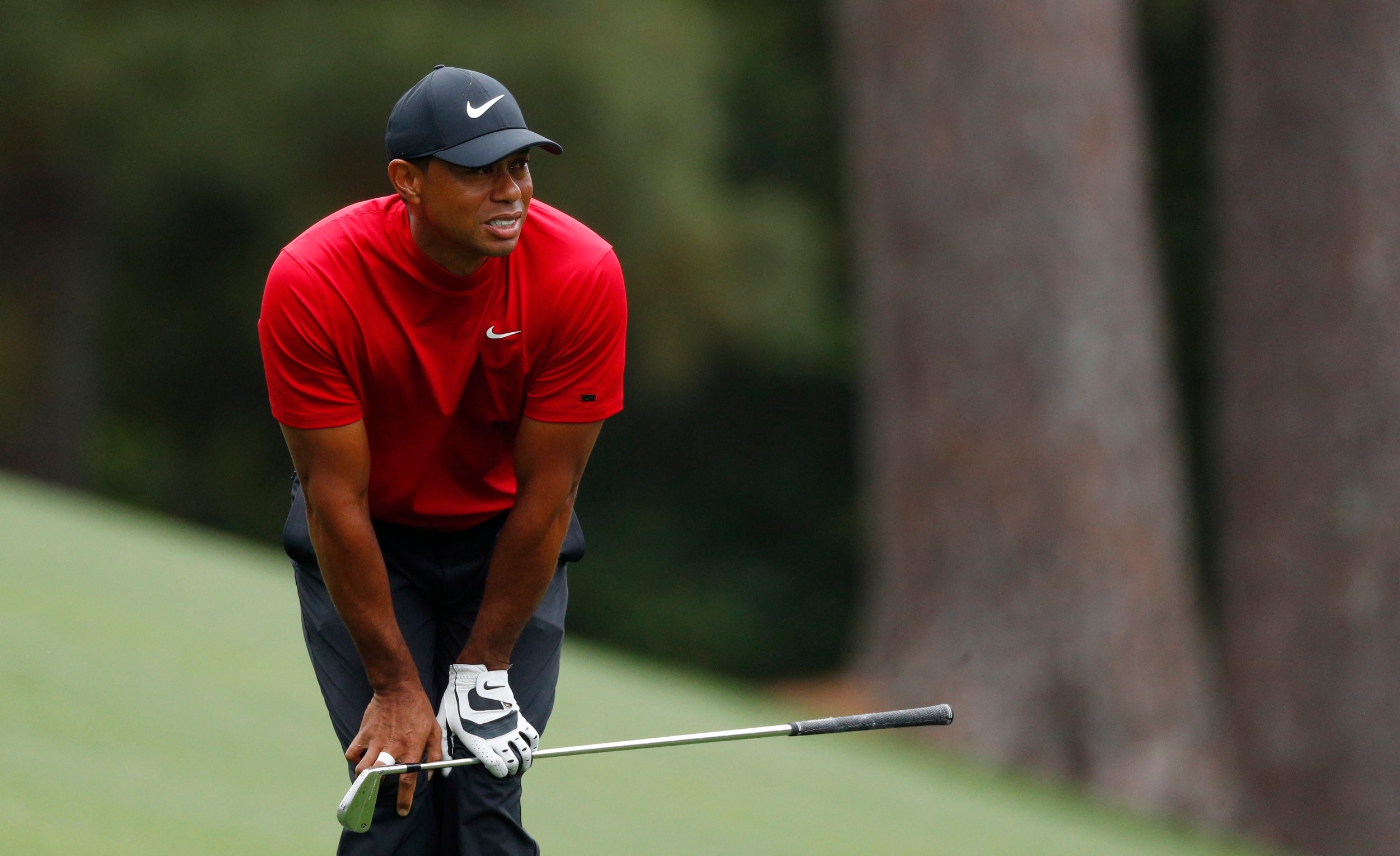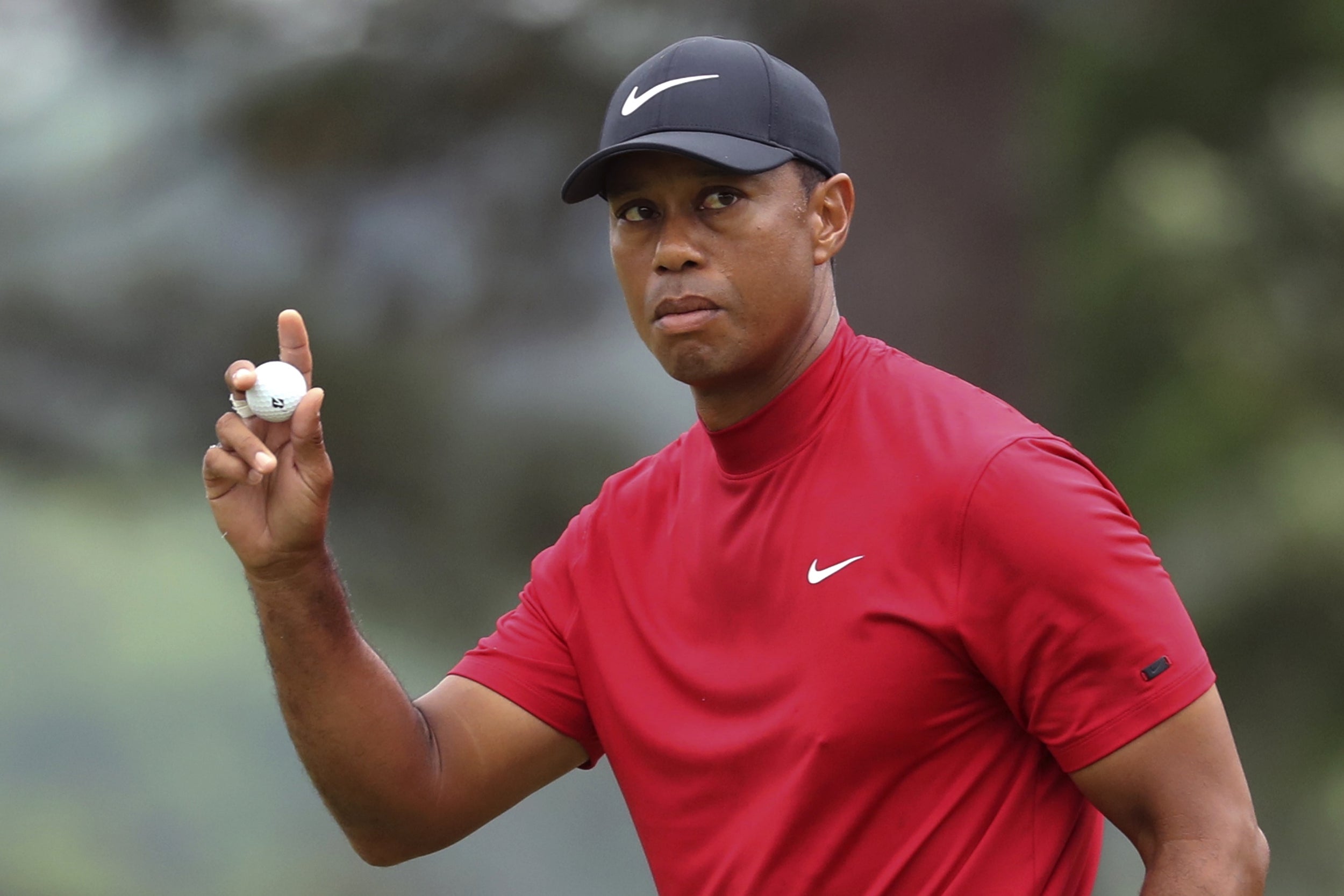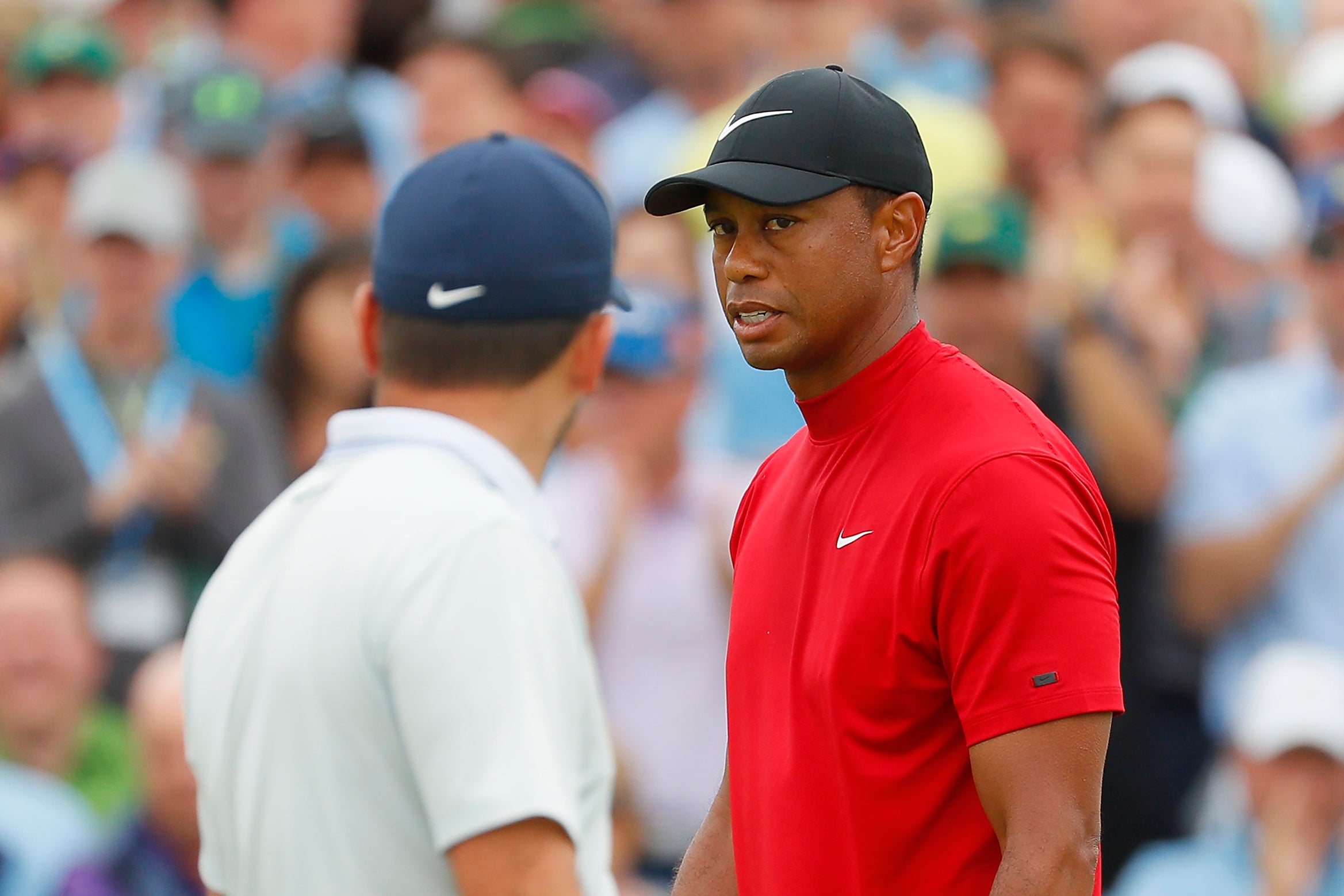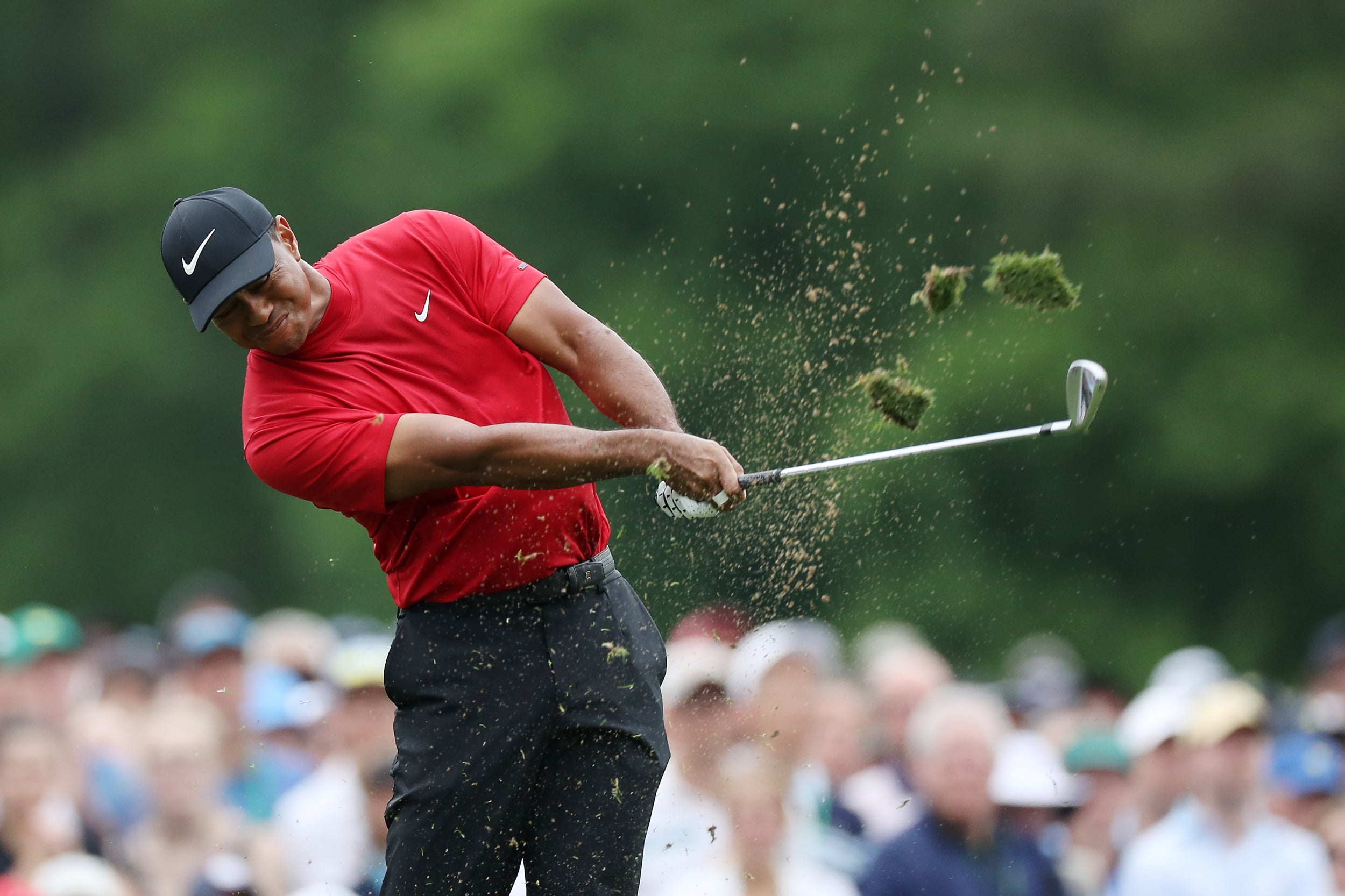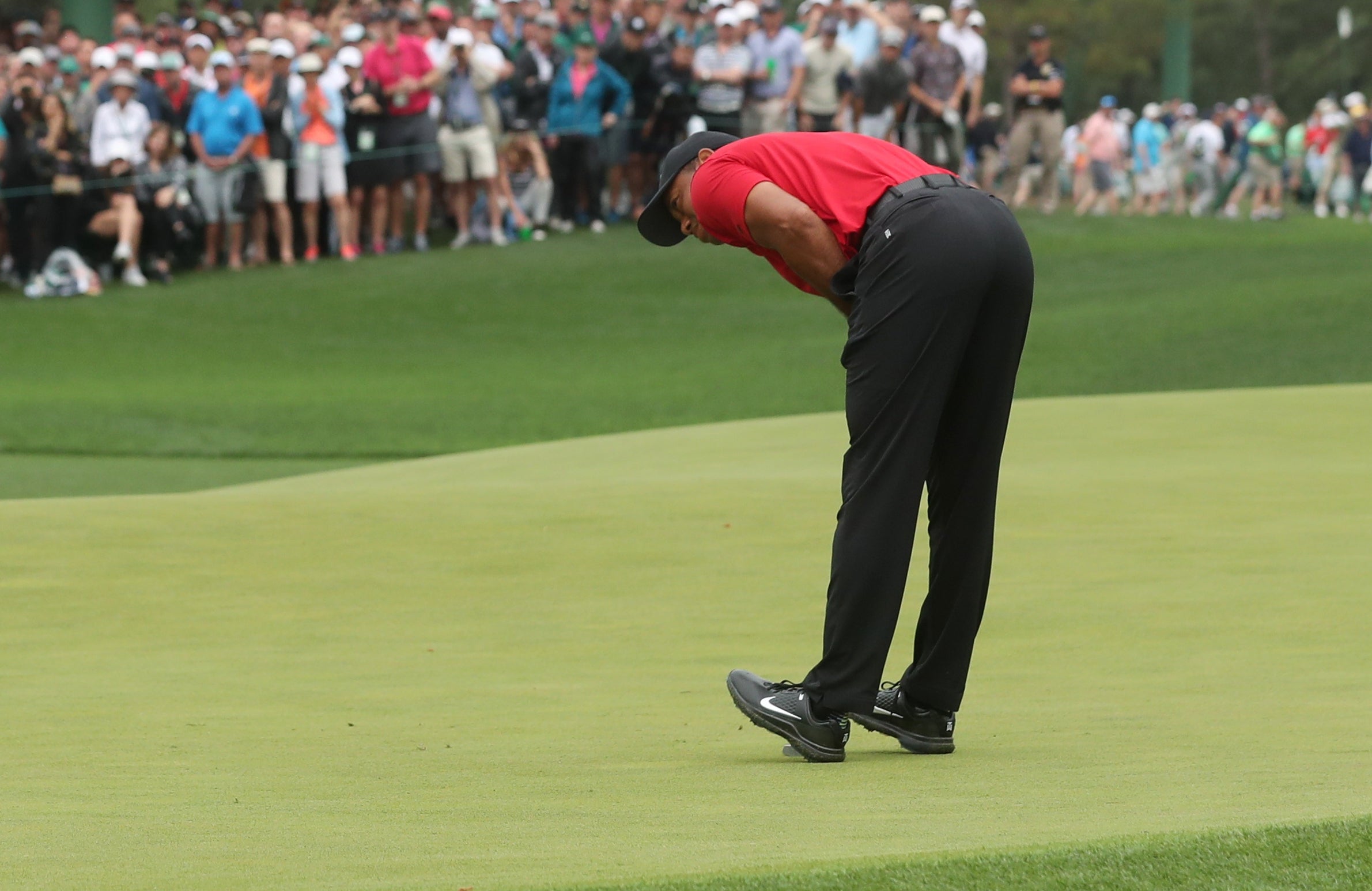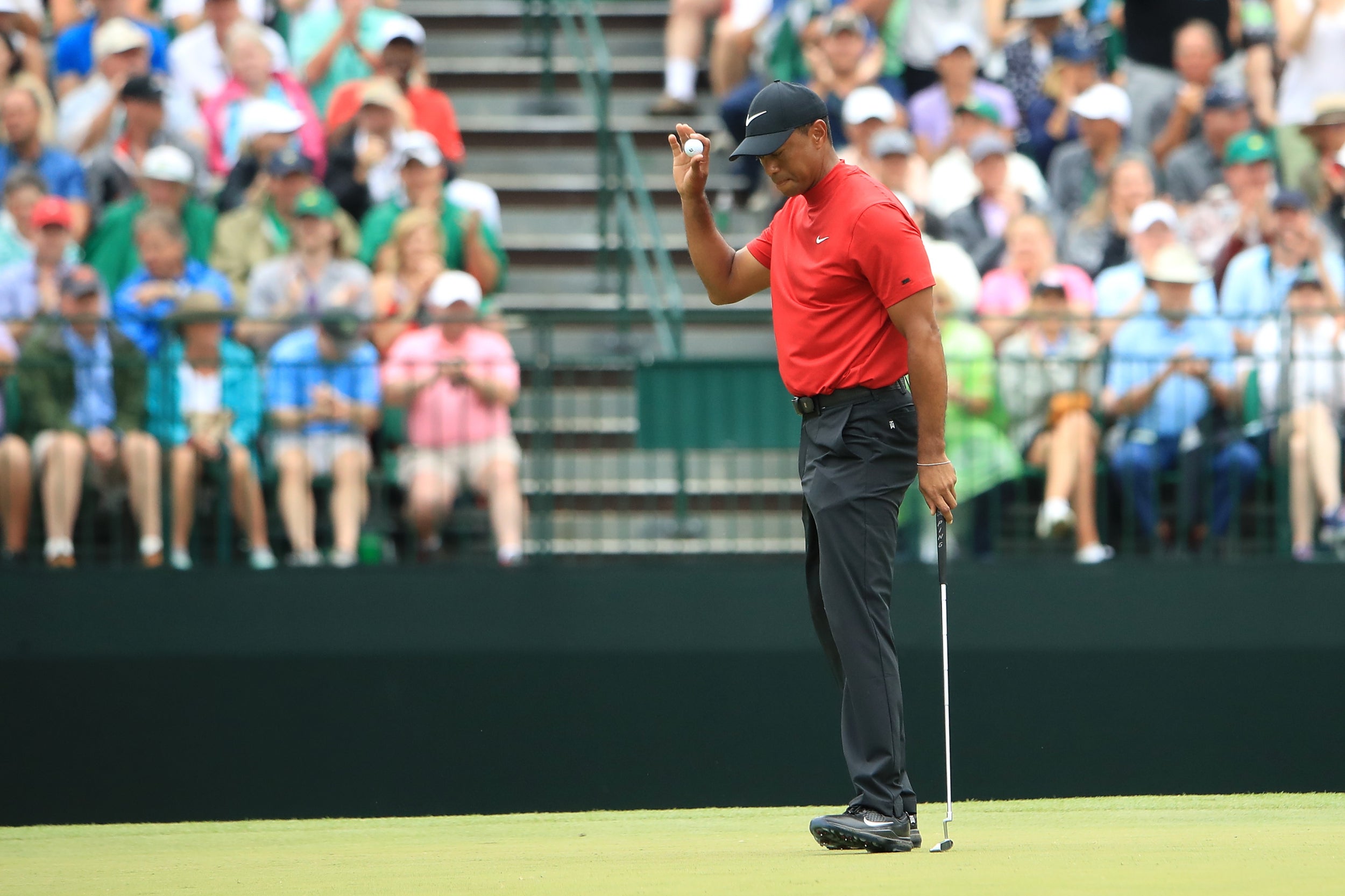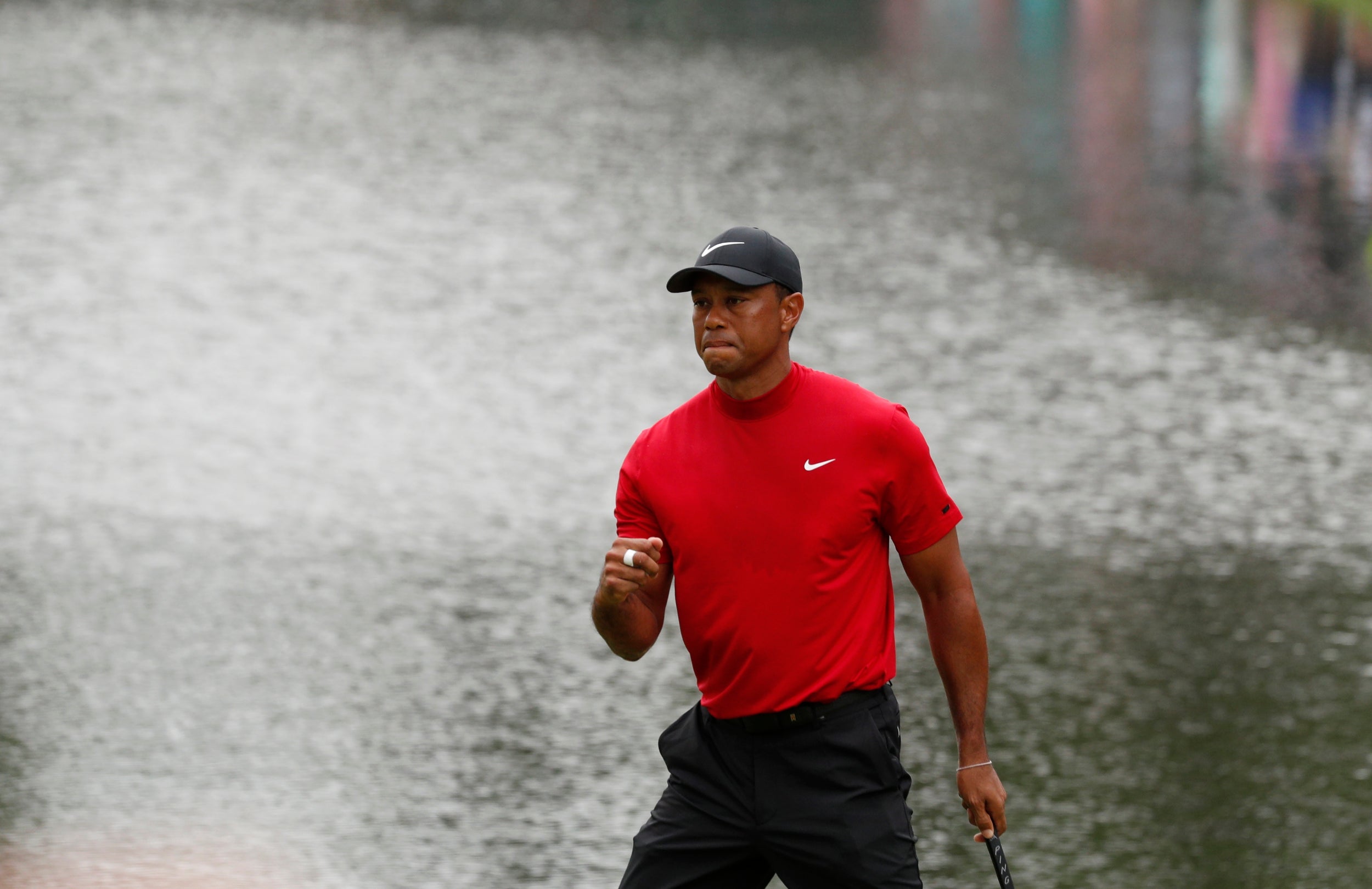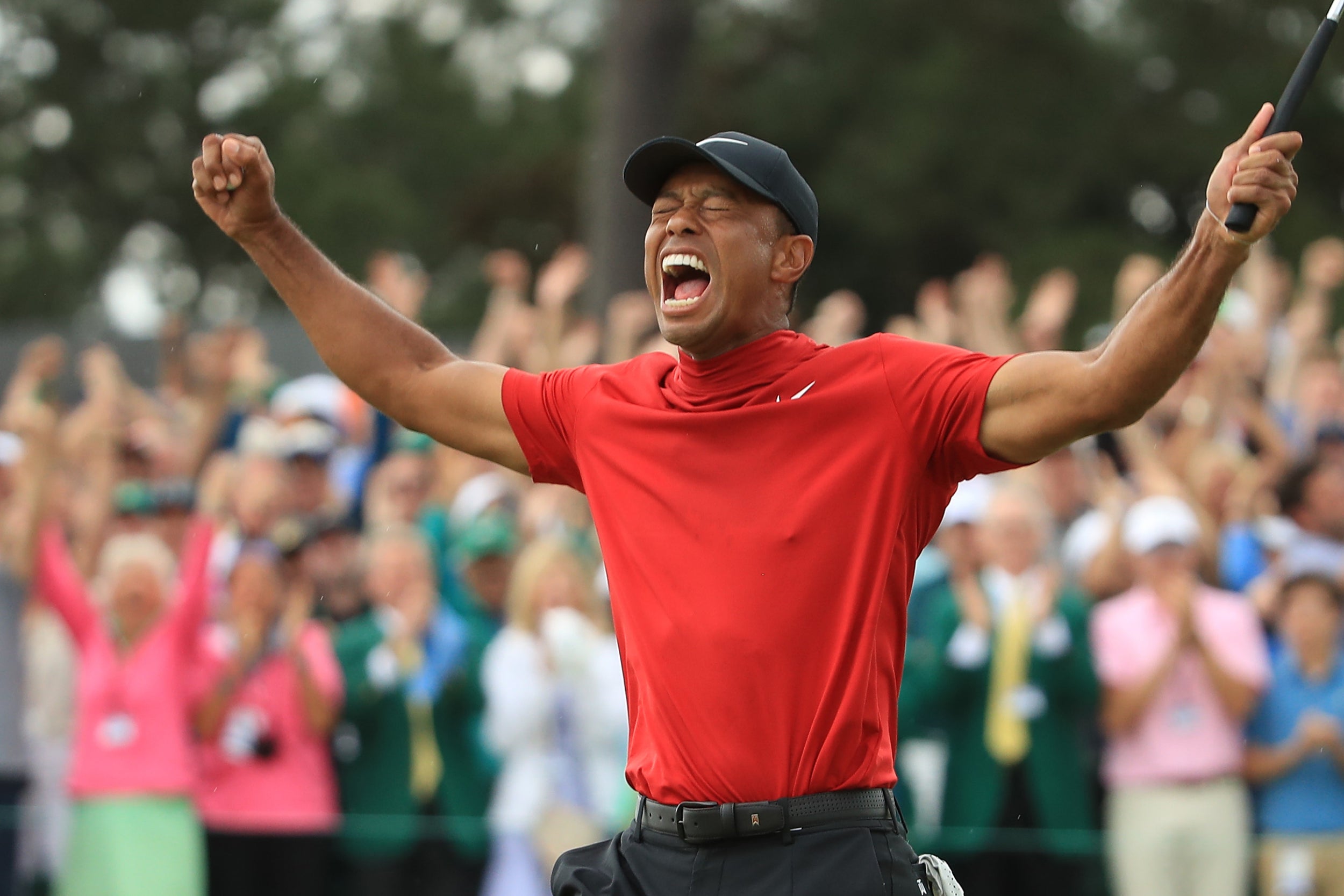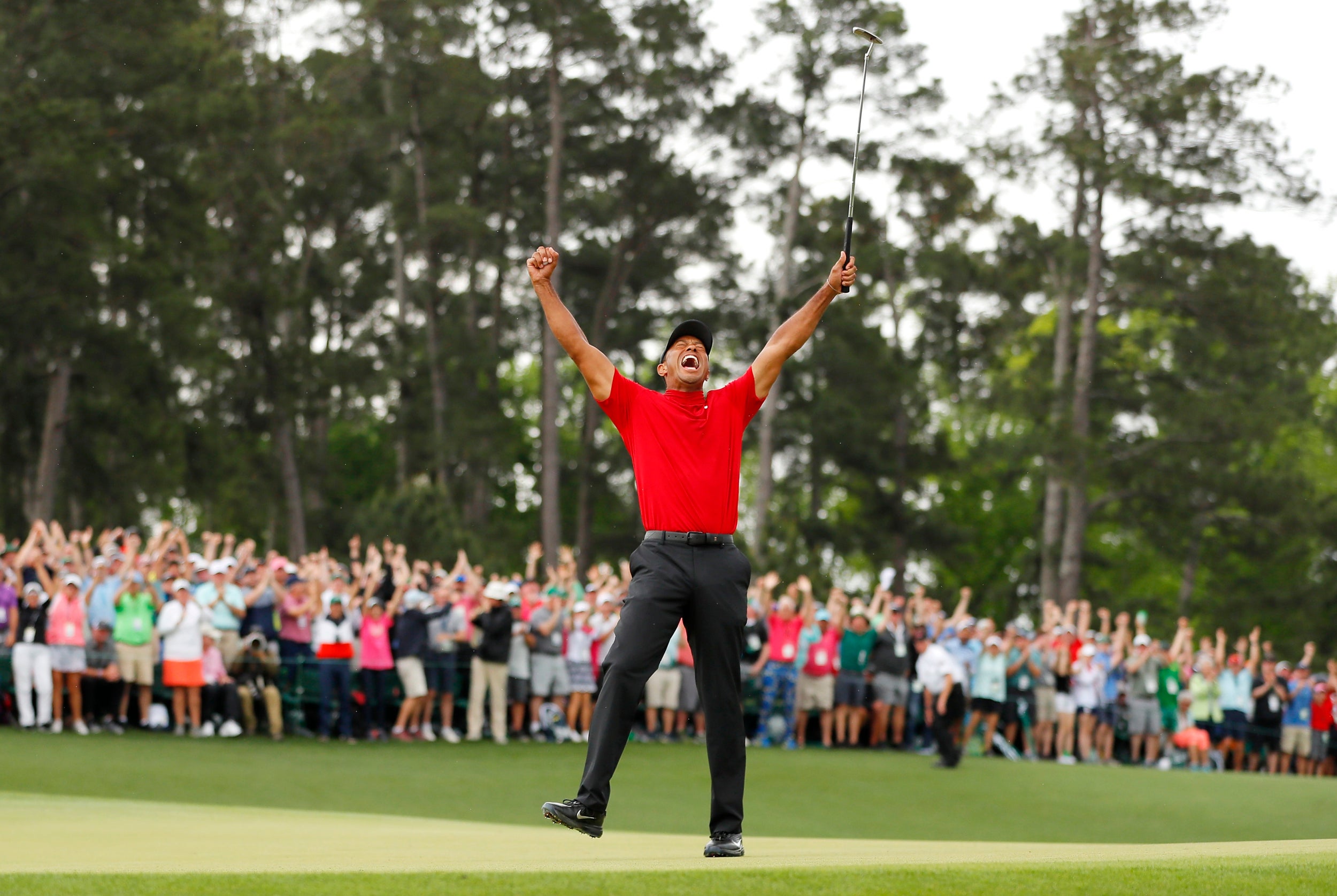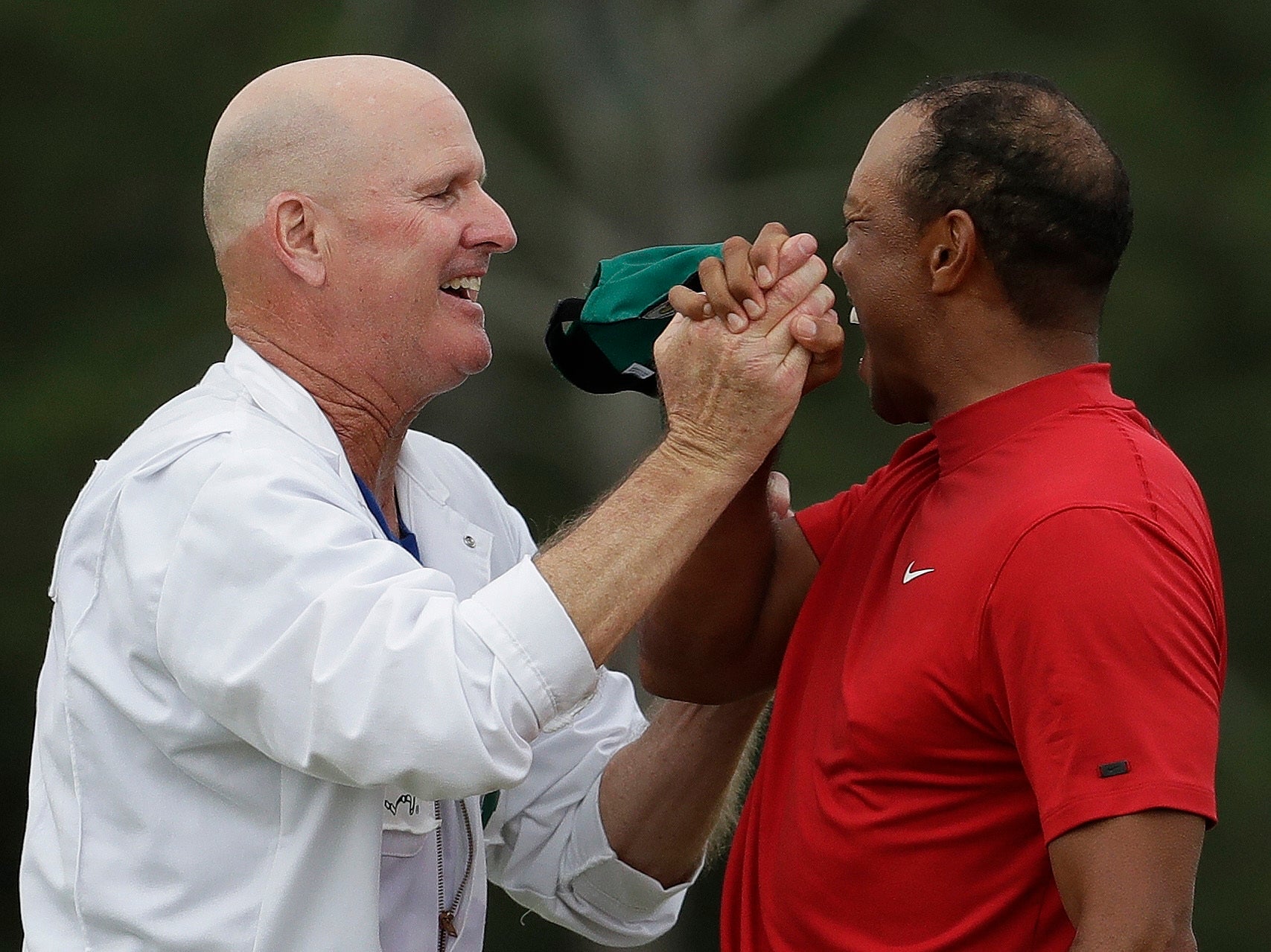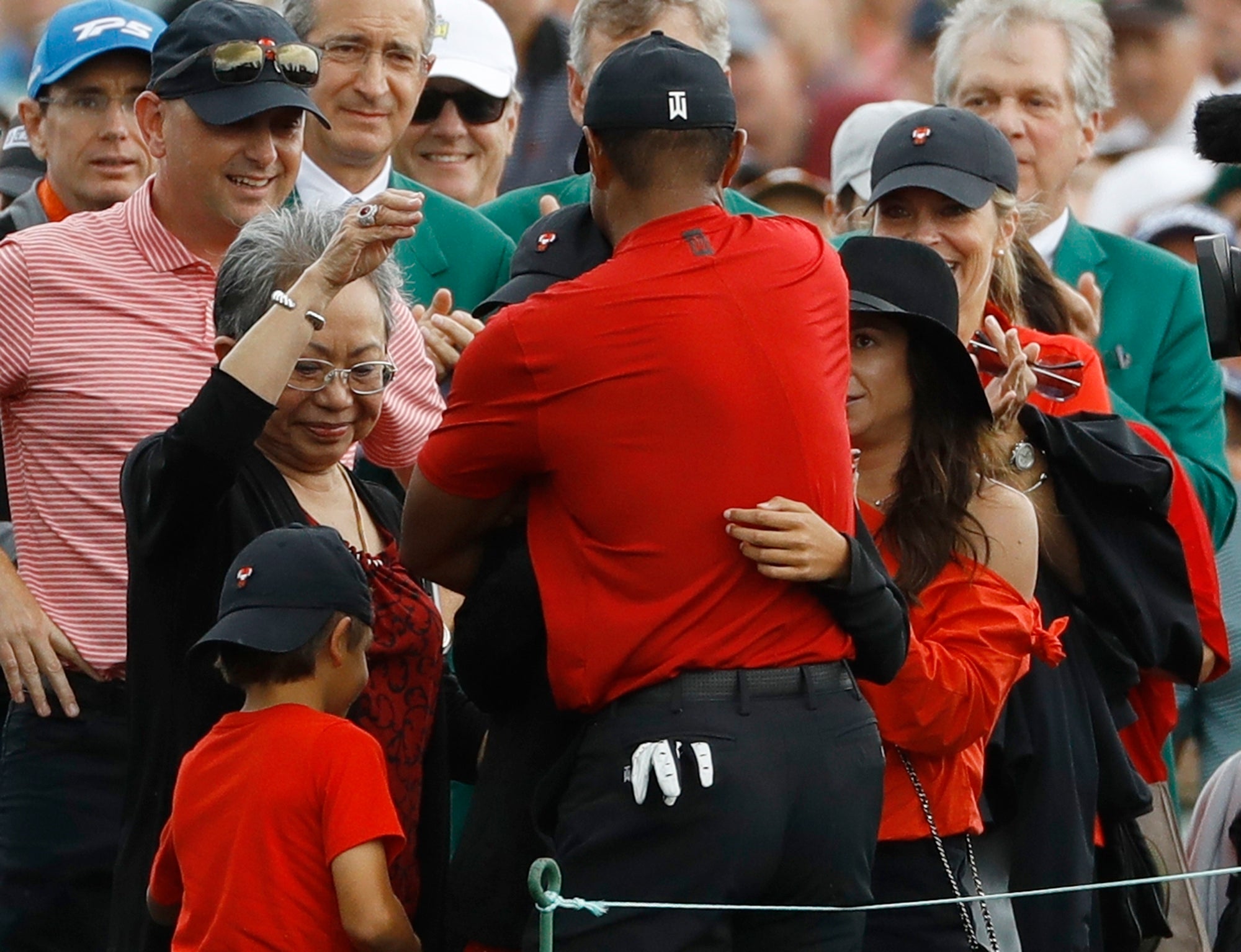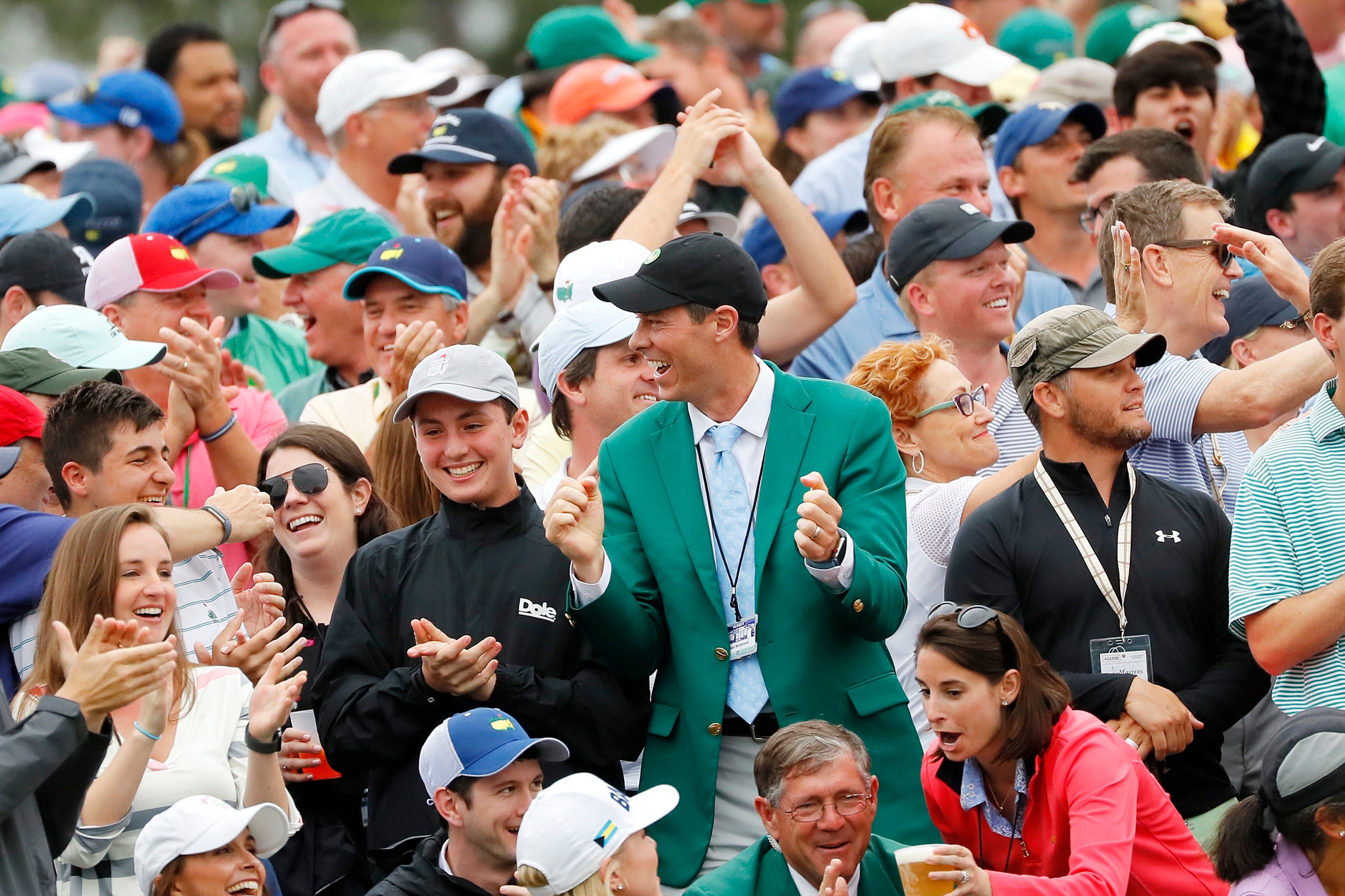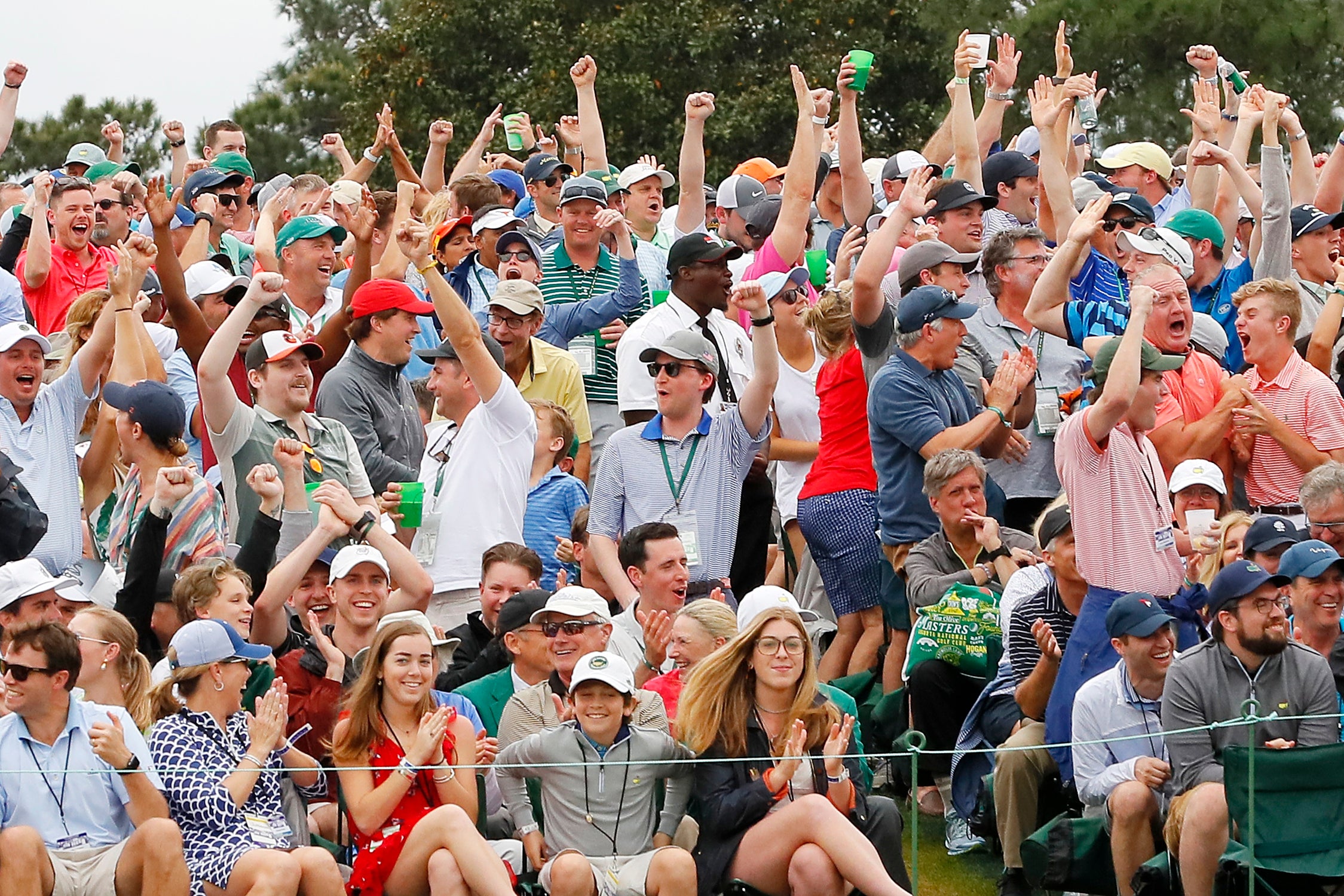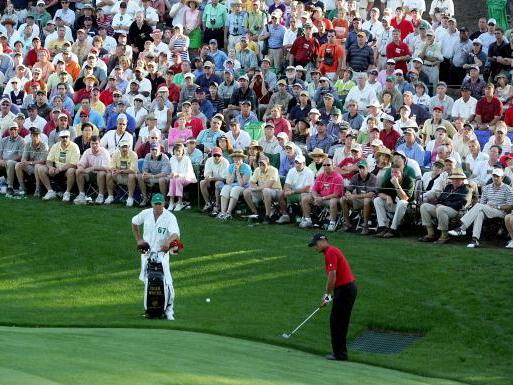It was impossibly still. The way the ball paused theatrically on the lip of the hole, Nike swoosh smiling at the camera. The rungs of supporters wedged 10-deep in matching khakis, arms frozen aloft. The roar that hung in the air. When it finally fell, with a clink that shook the sport to its core, it’s hard to argue golf has been the same since.
Tiger Woods was different then, too. He hadn’t yet grieved his father or been spoiled by the torment of his personal life. His charisma was still magnetic, see-sawing between innocence and ruthlessness, the irresistible sportsman and the emotionless juggernaut. But what was most alluring was that his aura of invincibility had shown its first glimpses of cracking.
After winning eight majors within his first six years as a professional, the last 34 months had been barren. And while Woods had retreated to a Texan ranch, remodelling his swing under dark, Vijay Singh took over as world No 1, Phil Mickelson became Masters champion, and Ernie Els completed what was acknowledged as a ‘big four’. Looking back, it’s easy to forget that Woods’ unshakeable stranglehold had actually begun to slip away.
Download the new Independent Premium app
Sharing the full story, not just the headlines
What had started as a three-shot lead in the final round at the 2005 Masters was in danger of escaping him too. Playing in the final group, Woods’ advantage had been reduced to just one and Chris DiMarco, one of golf’s well-to-do nearly men, had left himself a 20ft putt at the par-3 16th to tie the lead.
For those who aren’t familiar with the raised green at the 16th, the flag is set on Sundays into a jut like the tip of Italy’s boot. The ridge that splits the green acts as a courier, drawing the ball down its slope towards the hole. Anything that stays above it, though, leaves a putt that could be tapped with a feather and still end up flying past.
Tiger Woods wins The Masters in pictures
1/18 Tiger Woods wins The Masters
2/18 Tiger Woods wins The Masters
3/18 Tiger Woods wins The Masters
4/18 Tiger Woods wins The Masters
5/18 Woods makes birdie at the 8th to close the gap
6/18 Tiger Woods wins The Masters
7/18 Tiger Woods wins The Masters
8/18 Tiger Woods wins The Masters
9/18 Tiger Woods wins The Masters
10/18 Tiger Woods wins The Masters
11/18 Tiger Woods wins The Masters
12/18 Tiger Woods wins The Masters
13/18 Tiger Woods wins The Masters
14/18 Tiger Woods wins The Masters
15/18 Tiger Woods wins The Masters
16/18 Tiger Woods wins The Masters
17/18 Tiger Woods wins The Masters
18/18 Tiger Woods wins The Masters
1/18 Tiger Woods wins The Masters
2/18 Tiger Woods wins The Masters
3/18 Tiger Woods wins The Masters
4/18 Tiger Woods wins The Masters
5/18 Woods makes birdie at the 8th to close the gap
6/18 Tiger Woods wins The Masters
7/18 Tiger Woods wins The Masters
8/18 Tiger Woods wins The Masters
9/18 Tiger Woods wins The Masters
10/18 Tiger Woods wins The Masters
11/18 Tiger Woods wins The Masters
12/18 Tiger Woods wins The Masters
13/18 Tiger Woods wins The Masters
14/18 Tiger Woods wins The Masters
15/18 Tiger Woods wins The Masters
16/18 Tiger Woods wins The Masters
17/18 Tiger Woods wins The Masters
18/18 Tiger Woods wins The Masters
Woods’ eight-iron hadn’t only cleared the slope, it had trickled over the back of the green into a sunken catchment area. From where he stood, the hole itself wasn’t even visible. To judge the pace, the ball would have to take the ridge at virtually dead weight. To pick the line, he would need to aim 25ft left of the flag, pitching the ball on a scruff in the fringe. Before Woods had even taken a practice swing, the shot had been pronounced impossible.
“One of the toughest pitches on the course,” declared the ominous voice of CBS’ commentator Lenny Wadkins. “He’d be lucky to get it inside DiMarco’s ball.”
Woods paced back and forth, toying with the suspense, glaring at a strip of light between the shadows.
“After Tiger inspected the green and was walking back to his ball, he pointed out an old ball mark on the green,” said his caddie, Steve Williams. “It was the size of a dime, almost fully healed, practically invisible. He said, ‘You think if I hit that spot, it’ll take the slope without going into the bunker?’”
It landed on that exact tuft – an absurdity within itself – yet by the time Woods’ ball began the cinematic crawl towards the ridge, only a few solitary Southern twangs of ‘go on, baby’ dared offer hope. At 15ft, the crowd took to their feet. By 10, the noise was almost feral. Woods, though, remained utterly still, eyes burning into the back of the ball.
The Woods celebration – the severely arched back and sky-bound punch, the red shirt and defiant roar – has always been one of sport’s most iconic. A moment of pure, destructive confidence within a peaceful, if not often mundane game.
Only once his ball was within 5ft, did Woods begin the march forward, left hand raised above his head, wedge poised between two fingertips. A walk of such certainty you berated yourself for ever assuming it wasn’t plausible.
When the ball stopped, with his fist clenched and the air already cowering, he fell into a squat of disbelief. The Nike swoosh hung on the lip for 1.8 seconds. Time frozen, Williams mid-stomp, the crowd aghast, the trees perfectly still.
“In your life have you seen anything like that?” gasped Verne Lundquist when gravity finally took hold.
Woods later described that final pull as an “earthquake”. The never understated Williams heralded it a “miracle”. Yet, somehow, they are fitting descriptions for those spine-tingling moments where Woods twisted what felt possible. A man who repeatedly manufactured the untouchable with total disregard. Just like when he crouched in hope and anguish on the 16th green, when Woods moved, everything else around him seemed to stop. And that genius may never be replicated.
Source: Read Full Article

